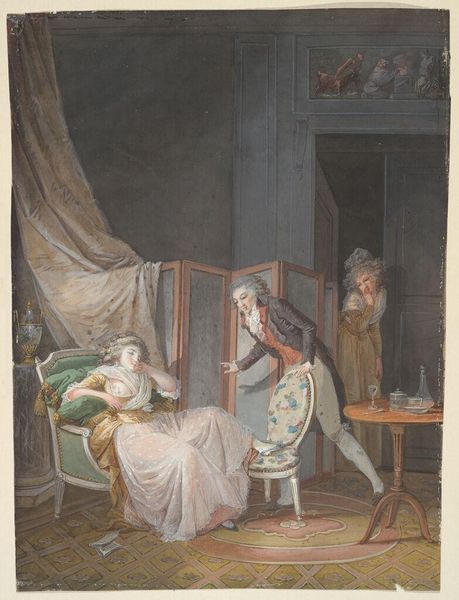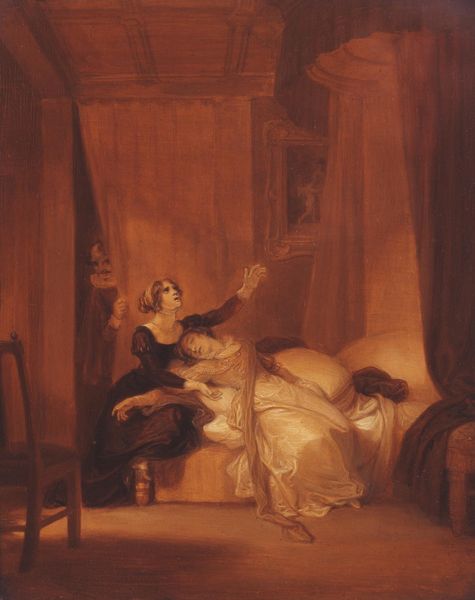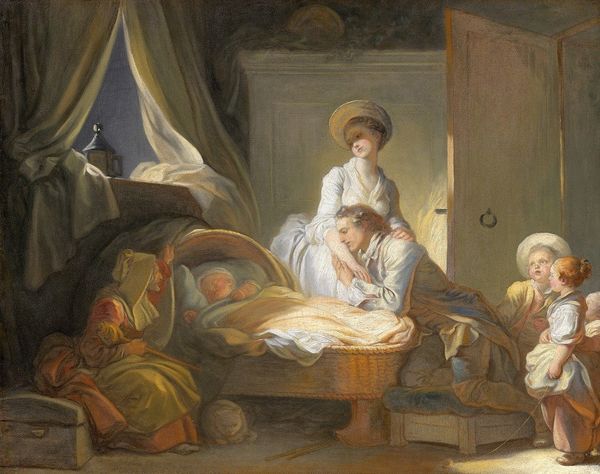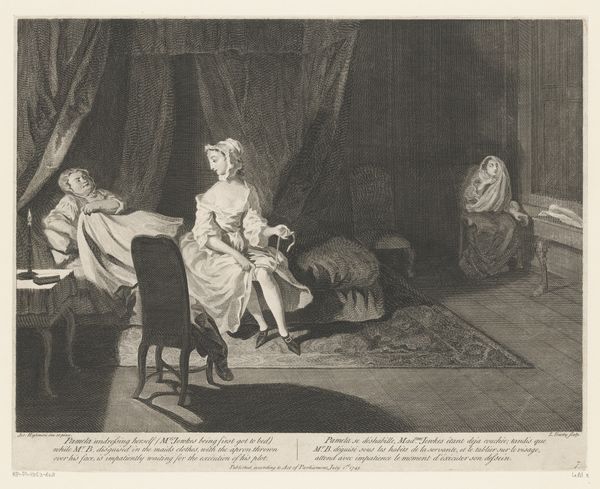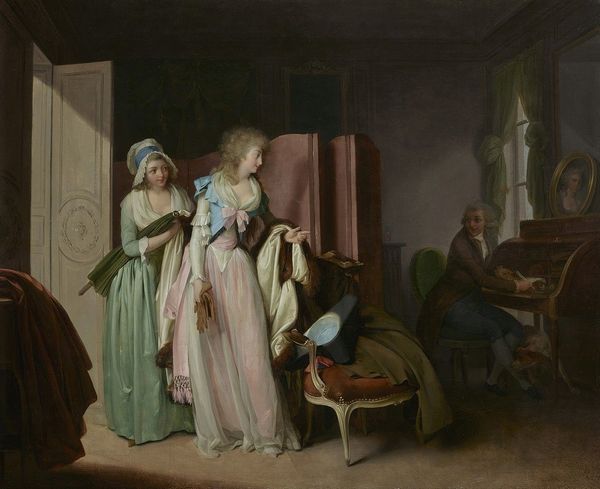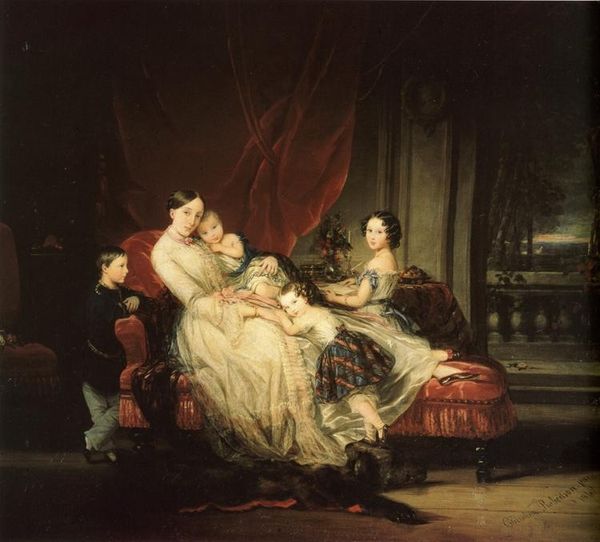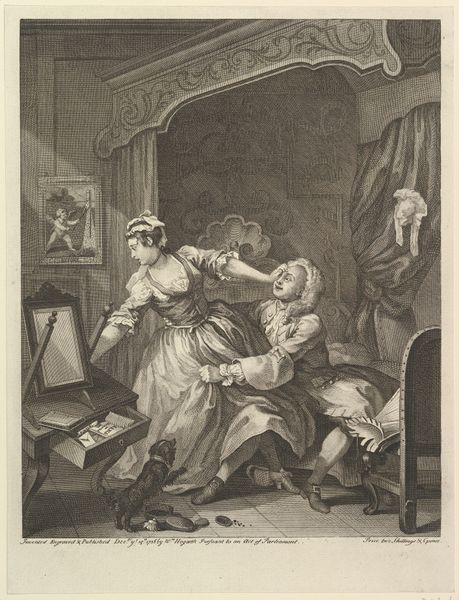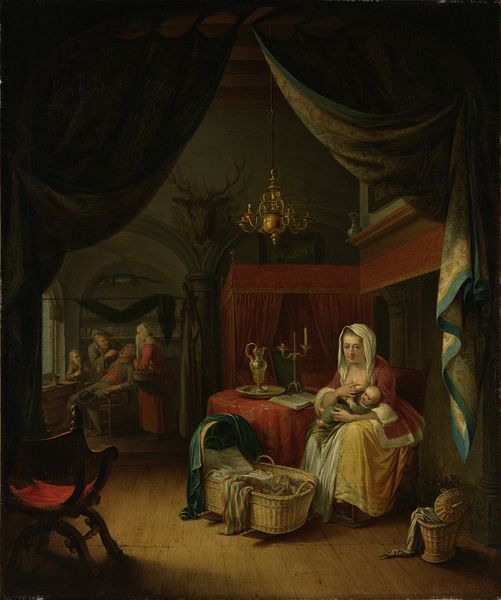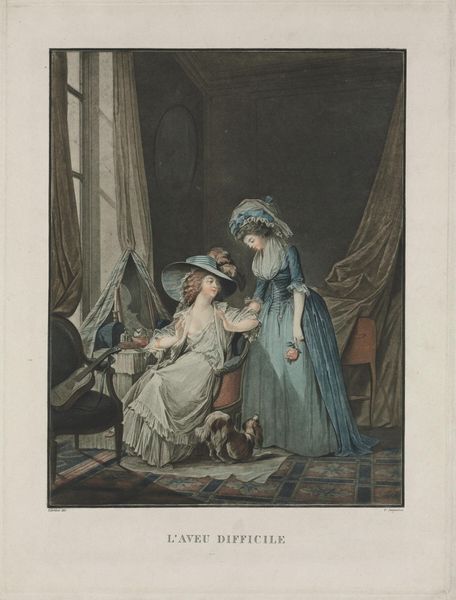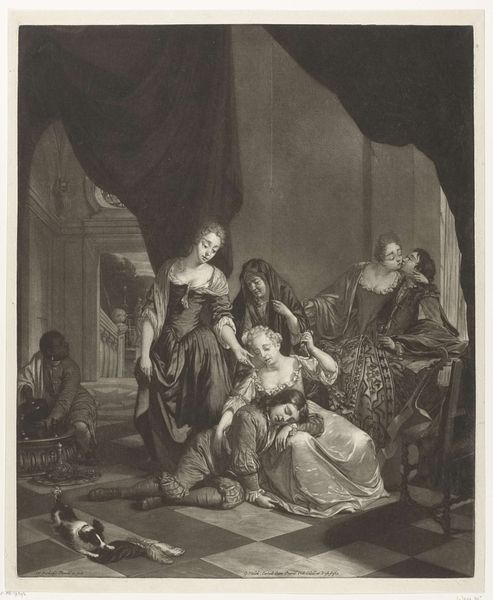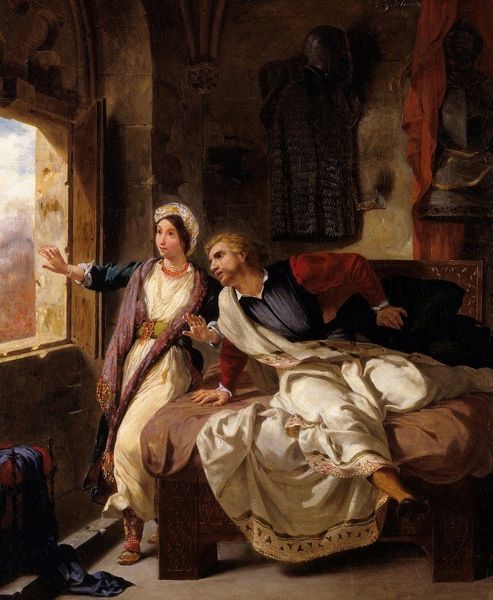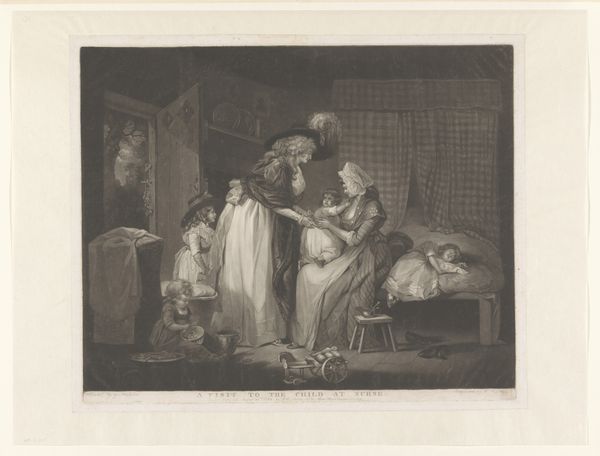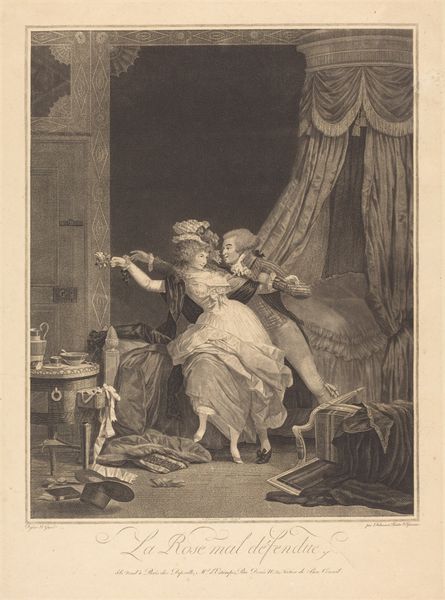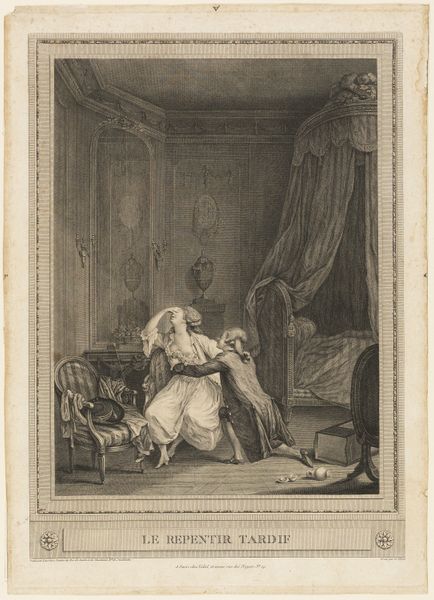
Dimensions: support: 627 x 757 mm frame: 840 x 960 x 110 mm
Copyright: CC-BY-NC-ND 4.0 DEED, Photo: Tate
Editor: Joseph Highmore's "VII: Pamela in the Bedroom with Mrs Jewkes and Mr B." presents a rather tense domestic scene. The figures seem confined, almost staged. What symbols might be at play here? Curator: Consider the veil, the bed, the shadows. The veil often signifies concealment, perhaps innocence threatened. The bed, a space of vulnerability, is dominated by the older woman. Doesn't the very darkness suggest a moral unease, a struggle for power? Editor: That's fascinating. So, it's not just a scene, but a coded representation of virtue under duress? Curator: Precisely. Highmore uses these visual cues to tap into a cultural understanding of virtue, temptation, and the anxieties surrounding female agency. Editor: It really shifts my perspective. I initially saw a simple narrative scene, but now I see a complex symbolic drama. Curator: The power of images lies in their layered meanings, reflecting our shared history and anxieties.
Comments
tate 8 months ago
⋮
http://www.tate.org.uk/art/artworks/highmore-vii-pamela-in-the-bedroom-with-mrs-jewkes-and-mr-b-n03574
Join the conversation
Join millions of artists and users on Artera today and experience the ultimate creative platform.
tate 8 months ago
⋮
This scene shows Mr B’s most dastardly attempt to seduce Pamela. Aided by the unprincipled housekeeper Mrs Jewkes, shown in bed to the right, Mr B hides in Pamela’s bedroom. He sits disguised as a maid with an apron thrown over his head, waiting to jump into bed with her. Highmore produced his illustrations independently of Richardson, though the two men became close friends as a result of the paintings. Gallery label, February 2016
